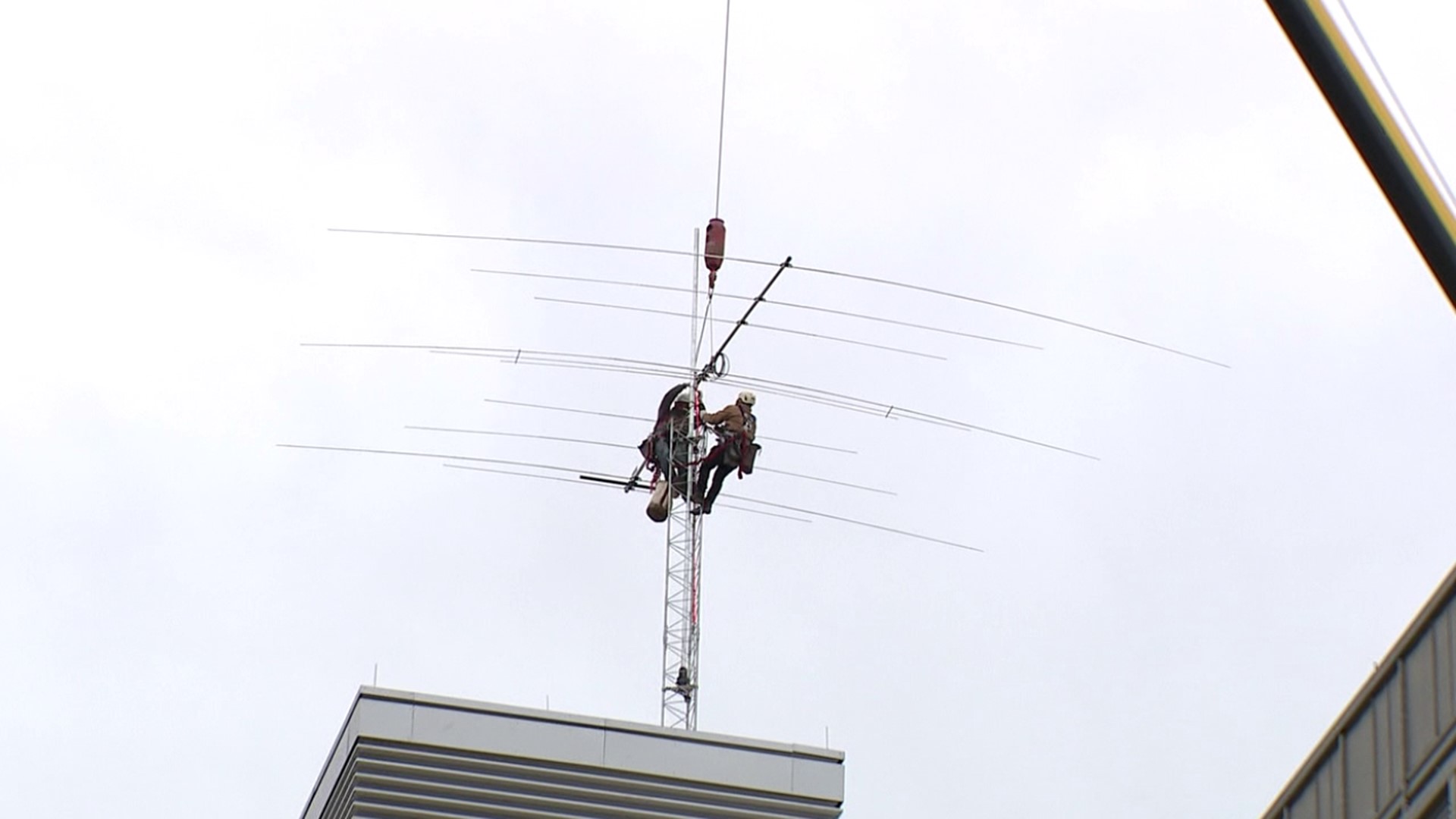SCRANTON, Pa. — A crane helped put a new antenna and tower into place on top of the Loyola Science Center at the University of Scranton with some excited onlookers nearby.
"We're going to get some valuable information, and a lot of other people are excited about it, so it gets us excited too," said Thomas Pisano, a junior at the university.
Dr. Nathaniel Frissell is an assistant professor of physics and engineering at the university and says this antenna will put a student-run HAM radio station online. Dr. Frissell says HAM radios can connect you with people all around the world with its special radio waves.
"These signals, when they leave the antenna, they don't just go straight where you can see it, they'll actually go up to the upper atmosphere, and they'll be reflected back down to Earth, and then it can hop multiple times," said Dr. Frissell.
There is also science behind those signals, and they can be affected by the atmosphere and weather in space. Dr. Frissell's project to bring this station to the university was one of five chosen as a part of a Citizens Science Project with NASA.
"We're working on figuring out how we can use it to support knowledge of space weather and advanced science as well," said Dr. Frissell.
Several students and volunteers from other states came to watch the tower go up. They all took part in a previous study during the annular eclipse last month and are looking forward to how much more data they can collect from it.
"And this is an antenna that lets you hear things. You need this big of an antenna and this type of a tower in order to be able to have the sensitivity to see the small changes that we're interested in studying," said Steve Cerwin of Texas.
"We didn't get to see much with the annular the way the rotation was in the cloud. So this one, I'm excited to get better data with this will have better equipment, and maybe we'll be able to see something," said Pisano.
The total solar eclipse will happen next spring on April 8th, and these scientists and students will be ready for it.

